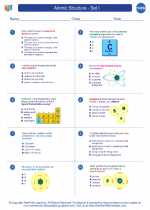Terrestrial Ecosystems
A terrestrial ecosystem is a type of ecosystem found on land. It is characterized by specific plant and animal communities, as well as the physical and chemical environment in which they interact. Terrestrial ecosystems are essential for maintaining the balance of gases in the atmosphere, regulating climate, and providing habitats for a wide variety of organisms.
Components of Terrestrial Ecosystems
1. Abiotic Factors: These include non-living components such as soil, water, air, sunlight, and climate. These factors play a crucial role in determining the type of terrestrial ecosystem that exists in a particular region.
2. Biotic Factors: These encompass the living organisms within the ecosystem, including plants, animals, fungi, and microorganisms. They interact with each other and with the abiotic factors to form complex food webs and ecological relationships.
Types of Terrestrial Ecosystems
1. Forest Ecosystems: These are characterized by a dense growth of trees and diverse understory vegetation. Forest ecosystems can be further classified as tropical, temperate, or boreal based on their location and climate.
2. Grassland Ecosystems: These are dominated by grasses and other herbaceous plants, with few or no trees. They are found in both tropical and temperate regions.
3. Desert Ecosystems: These are characterized by low precipitation and extreme temperature variations. Desert ecosystems have adapted to these harsh conditions, often displaying specialized plant and animal species.
4. Tundra Ecosystems: Found in the far northern and southern regions of the Earth, tundra ecosystems are characterized by low temperatures, short growing seasons, and permafrost. Vegetation in tundra ecosystems is adapted to these harsh conditions.
Ecological Interactions
1. Competition: Organisms within terrestrial ecosystems compete for resources such as food, water, and territory. This competition can drive natural selection and evolution.
2. Predation: Predators play a crucial role in regulating the populations of prey species within terrestrial ecosystems. This helps maintain ecological balance.
3. Symbiosis: Various forms of symbiotic relationships, such as mutualism, commensalism, and parasitism, are common in terrestrial ecosystems and contribute to the overall biodiversity.
Human Impact
Human activities such as deforestation, urbanization, and pollution have significantly impacted terrestrial ecosystems. It is crucial to understand and mitigate these impacts to preserve the biodiversity and ecological balance of terrestrial ecosystems.
Study Guide
- Describe the abiotic factors that influence the characteristics of terrestrial ecosystems.
- Compare and contrast the major types of terrestrial ecosystems, including their flora and fauna.
- Explain the ecological interactions that occur within terrestrial ecosystems, and provide examples of each type of interaction.
- Analyze the impact of human activities on terrestrial ecosystems and propose potential solutions to mitigate these impacts.
◂Chemistry Worksheets and Study Guides High School. Atomic Structure - Set I

 Worksheet/Answer key
Worksheet/Answer key
 Worksheet/Answer key
Worksheet/Answer key
